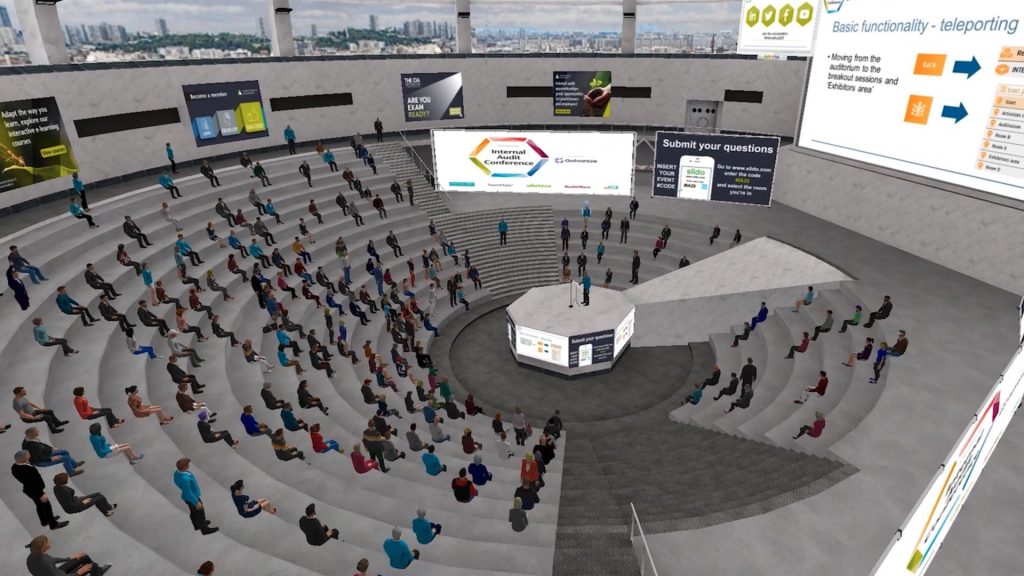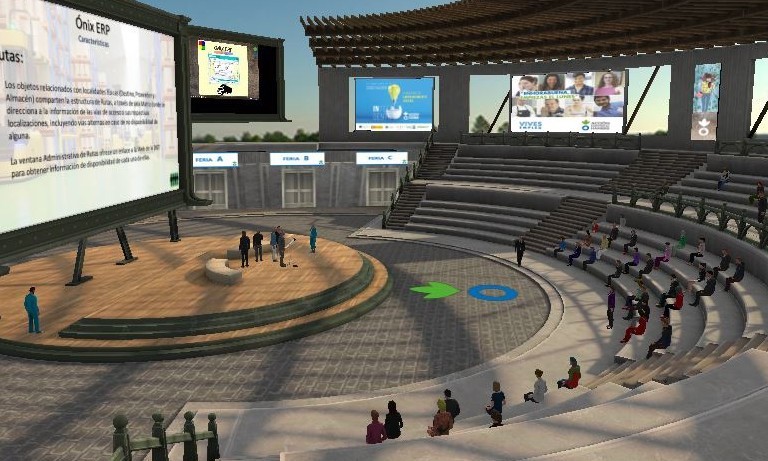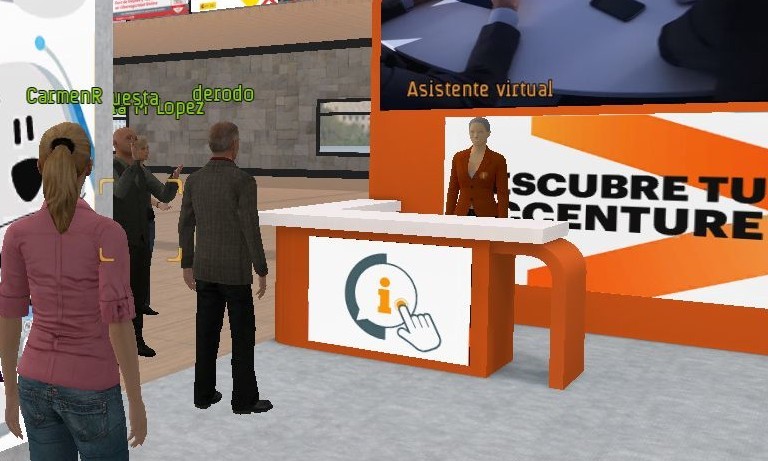The Metaverse has played a major role in companies and teams around the world looking for alternatives to traditional online events and meetings. And technology has once again become the answer to many corporative needs.
While it is true that apps such as Teams, Zoom, or Hangouts have been effective options for video conference meetings or webinars, they are not designed to hold events where hundreds of attendees take part simultaneously and aim to interact with each other. And let’s face it, how many of those “attendees” actually participate and interact with each other?
Value of Avatar-Based Platforms
This is precisely the value of avatar-based platforms: interactivity, immersion, and engagement. It’s simply not enough to have the events done via video calls. ‘Personal contact’ needs to feel as real as possible, where our relations are close despite being afar.
Here is where interactive avatars shine: they can mimic the experience of assisting a real-life event but in a virtual format. To achieve this, EACH participant creates their own avatar making it resemble themselves as much as they would like. They then can walk through the event, attend sessions, and even have a conversation and talk naturally through 3D spatial audio and voice. Spectators are transformed to attendees and give the power to speak up and stand up in virtual events.
These technological advances may still sound like science-fiction for some, but in reality, 3D avatars are our alter ego in the virtual world, a representation of ourselves that allows us to take part in a wide amount and variety of virtual events.
3D AVATARS: PROTAGONISTS IN THE CORPORATE METAVERSE
Virtual platforms have undoubtedly become the best alternative to 2D online events and ensure productive remote work. Nevertheless, technology is unstoppable, and it is time to upgrade to a solution that integrates gamification while ensuring real-time connections between users. The Corporate Metaverse is the perfect place to do so!
Virtway Events’ avatar-based event platform stands out from the rest due to various factors: the realism of their interactive avatars, the high level of interaction between them, and the 3D technology behind it.
In fact, the 3D spatial audio allows for natural conversations to take place in all kinds of events, from conferences to team building or breakout sessions, networking activities, online courses, or even webinars… everything is done in real-time and depends on the proximity between avatars.
As if this were not enough, these interactive avatars can also exchange any type of information in different formats, and even show emotions through animations (such as clapping or greeting).
The examples of avatar-based virtual events are diverse, but they can be applied to all types of virtual corporate events:
Avatars for Virtual Team Building Activities
This covers a series of activities for remote workers and online event attendees, designed to create interactive virtual meetings which feel real and look for closeness among the assistants. The 3D interactive avatars resemble each of the participants, both employees and activity organizers.
There are several Team Building activities available, from games to conferences and meetings. However, there is one that is especially active and requires a lot of communication between the participants: virtual Escape Rooms with avatars, an activity in which, without the need of using VR goggles, you experience a completely immersive environment with outstanding results.

Virtual Conferences with Avatars
Avatars have an extremely interactive role during these events… just as they would in person. For example, in a conference or an expo, businesses can set up their booths or information stands with 3D avatars that represent the companies staff. Attendees can easily contact assistants and network or ask questions in real-time.
Technology provides the possibility of organizing corporative events with realistic avatars that will not only meet the needs of the participants but also draw their attention to a virtual platform attractive enough that recreates these real-life situations with a touch of creativity.
Avatars for Virtual Meetings
Online training should not just be limited to employees taking courses with interactive content, it should go a step further and become a school that provides its assistants with a highly interactive virtual learning experience.
Artificial Intelligence in the Metaverse: Enhancing Avatar Experiences
As avatar-based events become increasingly prevalent in the corporate landscape, the infusion of Artificial Intelligence (AI) into these virtual gatherings is amplifying the potential for immersive engagement. While interactive avatars already bridge the gap between physical and virtual interaction, AI takes this a step further by integrating these avatars with intelligence and adaptability.
AI-driven avatars in the metaverse are not merely static digital representations; they are dynamic entities capable of understanding context, responding to queries, and even simulating emotions. This fusion of AI and avatars leads to more natural and meaningful interactions during virtual events. Imagine attending a conference where AI-powered avatars guide participants through the agenda, offer tailored suggestions, and create an environment that mirrors in-person dynamics.
One of the most compelling aspects of AI-enhanced avatars is their ability to learn and adapt. This enables them to personalize interactions, recommend relevant content, and even adjust their communication style to suit individual participants. Moreover, AI’s analytical capabilities provide event organizers with invaluable insights into attendee sentiment and engagement, enabling continuous improvement of future avatar-based events.
For that, virtual training systems based on avatars are the ideal tool to offer an authentic digital experience for collaborative learning. Each avatar can be personalized, which enhances the sense of being face-to-face. It is also possible to ask questions in real-time, have a conversation, as well as exchange information in different formats.
Virtual event platforms with 3D avatars give us the chance of recreating realistic situations as well as designing immersive experiences inside this virtual world. The technology behind each of these interactive avatars makes it possible to use them in corporate virtual scenarios which ensures fully interactive and realistic activities.




















